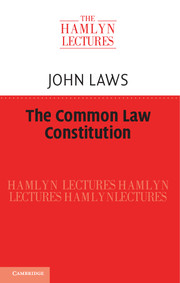Preface and acknowledgements
Published online by Cambridge University Press: 05 August 2014
Summary
The law is not a science, for its purpose is not to find out natural facts. It is an art as architecture is an art: its function is practical, but it is enhanced by such qualities as elegance, economy and clarity. The law has two practical purposes: first, to require, forbid or penalise forms of conduct between citizen and citizen, and citizen and state; secondly, to provide formal rules for classes of human activity whose fulfilment would otherwise be confused, uncertain or ineffective. Laws in the former category include every provision for a remedy, criminal and civil; those in the latter include all prescribed formalities and rules of procedure. All of the laws ought to be elegant, economical and clear; but it is a harder thing for the judge-made common law, which unlike statute is never a single work, but created over time.
In these Lectures I have been concerned with the first of these two purposes as it applies in the law of the constitution. In Lecture I, I describe the common law’s fourfold method – evolution, experiment, history and distillation; its process of continuous self-correction, at once allowed and restrained by these four methods; and the benign implications which all this has for the means of our governance.
- Type
- Chapter
- Information
- The Common Law Constitution , pp. xiii - xviPublisher: Cambridge University PressPrint publication year: 2014

